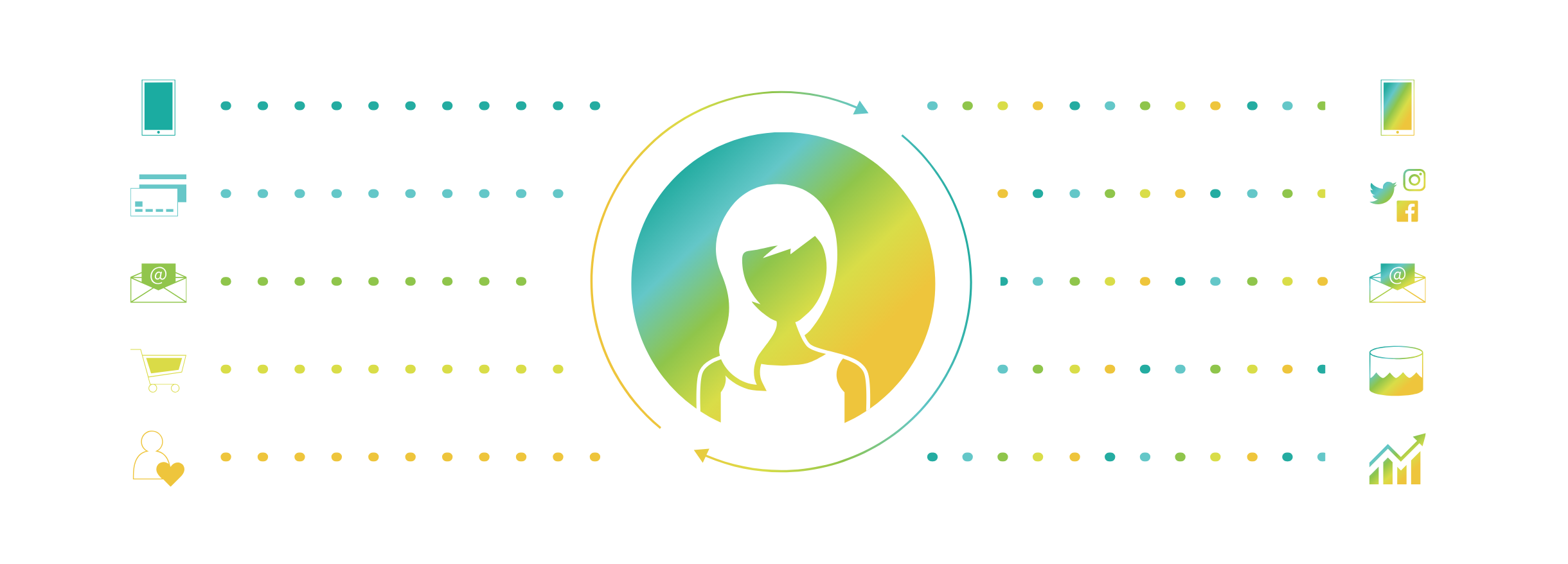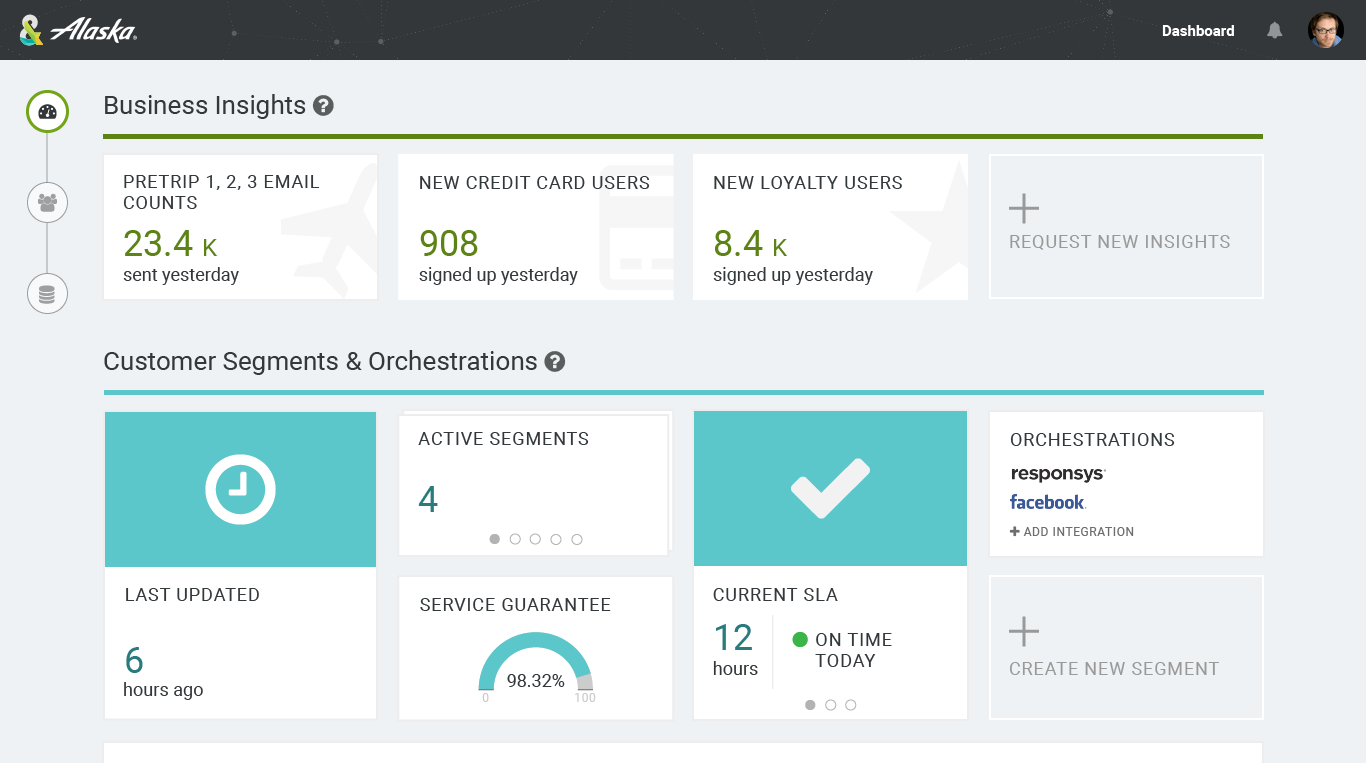Summary —
- Role: Visual Designer
- Timeframe: January 2017 - February 2018
- Deliverables: presentation decks, case studies, white papers, architecture diagrams, website designs (wireframes and mocks), email designs, SVG animations
- Software used: Google Slides, Adobe InDesign, Adobe Illustrator, Adobe Photoshop, Adobe AfterEffects, Figma
Defining the Brand
At Amperity, I had the opportunity to influence and design the first evolution of the brand.
I was the only visual designer at the company at the time, and I collaborated with marketing and leadership teams to come up with a new visual language for the company.
Before
Amperity's design language at the time was dark and heavy. The logo had already been created, but the company was still in its early stages - and in stealth mode.
After
After workshops and discussions with leadership, we decided a lighter, brighter direction more appropriately reflected the company's values.
Amperity Brand Style
Amperity's Launch Website
- Project Timeline: June 2017 - January 2018
- In Collaboration With: Rebecca Scully (then Marketing Manager), Aashish Dhamdhere (VP of Marketing), Scott Swanson (contracted web developer)
- Deliverables: Information architecture, wireframes, high-fidelity mocks, SVG animations
One of the main projects I had the privilege to work on was the design and launch of Amperity's first public website out of stealth mode. The website was scheduled to release on the same day as Amperity's customer event on September 14th, 2017.
This version of the site is no longer live as of September 22nd, 2018. The Amperity website is now in its second version and I was not a part of that project.
Wireframe iterations to the final design.
Design process
In collaboration with the marketing team (the Marketing Manager and VP of Marketing), we developed a plan to design and execute the website over the course of the summer. I was responsible for developing the website information architecture and completing the creative deliverables, including wireframes and high-fidelity mocks.
- Design principles were written by the marketing manager (project lead) to lay out the scope and context of the website. They were reviewed and agreed upon by the marketing and leadership teams.
- A project timeline was crafted to ensure all deliverables were thought of and accounted for. As unexpected circumstances arose, we adjusted the timeline and resources accordingly.
- Page goals were also written by the project lead to have a cohesive understanding of what we wanted each page to achieve. It lists out the informational and emotional goals we were aiming for, as well as any actions we were driving towards.
- I created an information architecture chart for the website based on the page goals and artifacts we wanted to show. I grouped the content together by relevance and tried to visualize cross-linking content.
I used Figma to design a basic layout structure of content and visuals. Figma was the ideal platform for collaborating with the then marketing manager who was providing copy for the sections.
After reviewing wireframes with the Marketing Manager and VP of Marketing, I started by creating several iterations of the home page to get a sense of the mood and style we wanted to achieve. After that, I applied the same layout and style scheme to the rest of the pages in the architecture. The mobile designs followed soon after.
After creating draft after draft of the architecture diagram we wanted on the website, I also took the time to learn Adobe AfterEffects and SVG animations to add some motion and liveliness to the website (the above image is static but moves on the actual website).
The following are various screenshots from the website.



















































